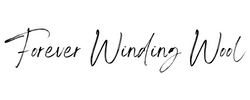Is Dyeing Yarn Cheaper Than Buying Pre-Dyed Yarn?
Posted by Kelly Holtsclaw on May 27th 2025
Have you ever wondered if dyeing yarn at home is more cost-effective than buying pre-dyed skeins? Many crafters dream of creating the perfect color to match their unique vision, but is it worth the effort and expense? While pre-dyed yarns offer convenience, dyeing your own unlocks creative possibilities. In this post, we'll break down the costs and time commitment involved in dyeing yarn, so you can decide if it's the right choice for your crafting projects.
What's the initial investment for dyeing your own yarn?
First, consider the initial investment. To dye yarn, you'll need a few essential supplies:
- Yarn Blanks: Undyed yarn, also known as yarn blanks, are typically made of natural fibers like wool, cotton, or silk. These can range in price depending on the fiber content and weight.
- Dyes: You have two main options:
- Natural Dyes: These are derived from plants (bark, roots, flowers) and insects. They're eco-friendly but can be trickier to use and achieve consistent colors.
- Commercial Dyes: These are typically acid dyes and offer a wider color range and easier application. However, they require careful handling and dedicated equipment.
- Mordants: These are substances that help the dye bond to the yarn fibers. Common mordants include alum, vinegar, and cream of tartar.
- Equipment:
- Dedicated Pots & Utensils: Safety first! If using commercial dyes, invest in pots, spoons, and other tools that you'll only use for dyeing.
- Heat Source: You'll need a stove or hot plate to heat the dye bath.
- Gloves & Mask: Protect your skin and lungs from potential irritants.
- Thermometer: To monitor the temperature of the dye bath.
Time Commitment: Dyeing Yarn is a Labor of Love
Dyeing yarn isn't just about the money; it's also about the time. The process involves several steps:
- Preparation: Scouring the yarn to remove any oils or dirt and using a mordant to prepare it to take the dye.
- Dyeing: The yarn simmers in a dye bath for a specific time, depending on the dye and fiber. This can range from 30 minutes to several hours.
- Rinsing: Thoroughly rinse the yarn until the water runs clear.
- Drying: Hang the yarn to dry, away from direct sunlight.
The entire process can take anywhere from a few hours to a full day, depending on the method and amount of yarn.
Cost Analysis: Is Dyeing Yarn Cost-Effective?
To determine if dyeing yarn is truly cost-effective, consider these factors:
- Yarn Type: Natural fibers (wool, silk) are generally more expensive than synthetic fibers (acrylic).
- Dye Costs: Natural dyes can sometimes be more expensive due to the sourcing and preparation involved. Commercial dyes have a lower cost.
- Equipment Costs: Factor in the price of dedicated pots, utensils, and safety gear.
- Time Value: How much is your time worth? If time is limited, the convenience of pre-dyed yarn might be worth the extra cost.
The Verdict: Dyeing Yarn vs. Buying Pre-Dyed
Ultimately, the decision depends on your priorities and preferences. Here's a breakdown:
Pros of Dyeing Yarn:
- Custom Colors: Create unique, one-of-a-kind shades that you can't find anywhere else.
- Creative Control: Experiment with different techniques and color combinations.
- Sustainability: Use natural dyes for an eco-friendly crafting experience.
Cons of Dyeing Yarn:
- Time-Consuming: The dyeing process requires patience and dedication.
- Initial Investment: Purchasing dyes, mordants, and equipment can be costly.
- Color Consistency: Achieving consistent colors can be challenging, especially with natural dyes.
- Learning Curve: There is a learning curve when dyeing yarn. Be prepared to practice and experiment.
Ready to Begin Dyeing Your Own Yarn?
Dyeing yarn can be a deeply rewarding experience for those who enjoy the creative process and value unique, handmade results. However, if you prioritize affordability and convenience, pre-dyed yarns might be the better choice.
If you're ready to take the plunge, start by purchasing the undyed yarn of your choice here at ForeverWindingWool! Then, explore the many online resources and tutorials to guide you on this colorful adventure. Happy dyeing!

